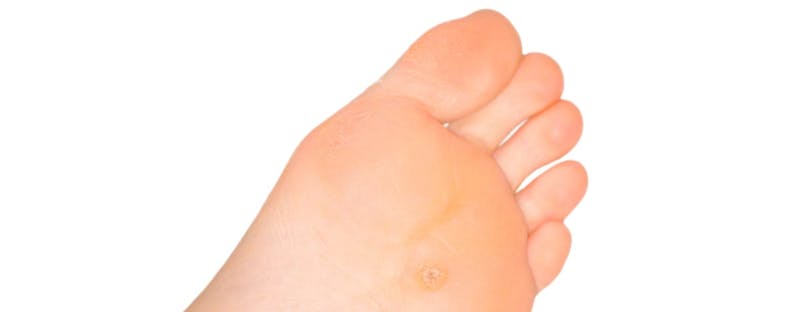Schedule a Consultation
Contact Us


Corns and calluses are hardened and thick layers of skin, often found on the toes and feet as well as hands and fingers. Corns and calluses develop when the skin protects itself from pressure and friction by hardening. Many things can contribute to the development of corns and calluses on the feet, including poorly fitting shoes and structural problems, such as bunions, hammer toe, and bone spurs.
Corns are generally smaller than calluses and have a hard center with inflamed skin. They are more common on non-weight bearing parts of the feet, like the tops of toes and area between toes. Corns can hurt if you press on them. On the other hand, calluses are generally not painful. They are larger than corns and are typically located on the soles of the feet.
Symptoms
Corns and calluses are easily visible. Symptoms include a rough and thick spot on the skin and a hardened and raised bump. There can also be tenderness or pain underneath the skin, in addition to flaky or dry skin.
Corns and calluses are not dangerous for most patients, just unsightly and uncomfortable. However, diabetics or those with other conditions that contribute to poor blood flow in the feet can experience complications. That’s because minor injuries to feet can lead to open and infected sores.
Treatment
Corns and calluses can generally be treated by removing the source of the pressure or friction. You can try to achieve this yourself, but should see a doctor if you are diabetic rather than treating the condition yourself. You should also see your doctor if the corn or callus is inflamed or if you are in a lot of pain.
Switching to properly fitting shoes or wearing pads designated for corns and calluses can help provide relief. Your doctor might trim away excess skin or prescribe a patch to remove stubborn corns and calluses. You may also need medication to reduce the risk of infection or shoe inserts to prevent recurring corns and calluses.
In severe cases, such as multiple corns and calluses that keep surfacing and causing pain, your doctor may perform surgery in order to correct alignment problems that contribute to calluses and corns.